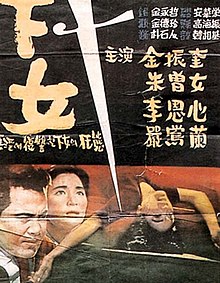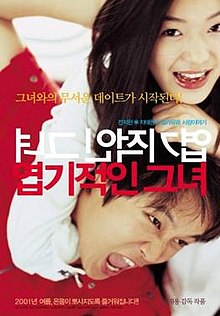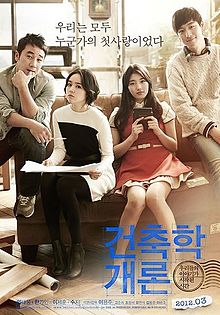Welcome to our exploration of the captivating world of Korean Romantic Movies, a genre that has steadily won the hearts of viewers globally. Known for their unique storytelling, emotional depth, and cultural richness, these films offer more than just entertainment—they provide a window into the nuanced portrayal of love, relationships, and human emotions. In this blog post, we delve deep into various aspects of Korean romantic cinema, from its historical evolution to the iconic movies that define this genre, the popular themes and tropes, and the profound impact of music and cultural representation. Whether you’re a longtime admirer or a curious newcomer, join us as we uncover the charm and allure of Korean Romantic Movies.
Historical Evolution of Korean Romantic Movies
The journey of Korean Romantic Movies is a fascinating tale of evolution, mirroring the country’s own historical and cultural shifts. From the early days of Korean cinema, romantic themes have been a staple, but the portrayal and depth of these themes have evolved significantly over the decades.
The Early Years (Before the 1990s):
In the early years, Korean romantic movies often mirrored the conservative nature of Korean society. The focus was primarily on traditional concepts of love, emphasizing virtues like sacrifice and duty. Classic films from this era, such as “The Housemaid” (1960), though not purely romantic, began to introduce complex emotional narratives.

The Golden Era (1990s to Early 2000s):
The 1990s marked a renaissance in Korean cinema, often referred to as the Golden Era. It was during this time that Korean Romantic Movies began gaining significant traction. Films like “The Classic” and “My Sassy Girl” broke away from traditional storytelling, introducing more dynamic and sometimes unconventional love stories. These movies not only appealed to domestic audiences but also began to attract international attention.

Modern Korean Romance (Mid-2000s to Present):
The mid-2000s saw further evolution, with romantic movies exploring diverse themes and genres. Movies like “A Moment to Remember” and “Windstruck” blended romance with elements of drama and comedy. The integration of technology and modern societal issues became more prominent in movies like “You’re My Pet” and “Love 911”.
The rise of global platforms has also significantly impacted the genre, with Korean romantic movies reaching a wider international audience. The focus shifted towards more relatable, global themes while still maintaining a unique Korean touch.

The Hallyu Wave:
The global phenomenon known as the Hallyu Wave, or Korean Wave, has played a pivotal role in the international popularity of Korean Romantic Movies. This cultural movement saw Korean media and entertainment, including cinema, gaining immense popularity across Asia and eventually worldwide.
From traditional to modern, the historical evolution of Korean Romantic Movies reflects the changing dynamics of Korean society and the film industry’s adaptability. As Korean cinema continues to evolve, the romantic genre remains a vital part of its heart and soul, captivating audiences with its unique blend of emotion, culture, and storytelling.
Popular Themes and Tropes in Korean Romance
Korean romantic movies, with their unique blend of heartfelt storytelling and cultural richness, have captivated audiences worldwide. Central to their appeal are the recurring themes and tropes that resonate deeply with viewers, both in Korea and internationally. Let’s explore some of the most popular themes and tropes that have become synonymous with Korean romance films.
The First Love Nostalgia:
A recurring and beloved theme in Korean romantic movies is the nostalgia of first love. Films like “The Classic” and “Architecture 101” beautifully capture the bittersweet, often poignant memories of a person’s first romantic experience. This theme resonates with audiences, evoking a sense of longing and the universal relatability of young love and its lasting impact.
The Rich Boy/Poor Girl Dynamic:
Many Korean romantic movies revolve around the love story between a wealthy, often arrogant male lead and a humble, hardworking female protagonist. This Cinderella-esque narrative, seen in movies like “Boys Over Flowers” and “My Love, My Bride,” often includes themes of overcoming societal and class barriers, emphasizing the power of love over material wealth and status.
Love Triangles and Forbidden Relationships:
Love triangles are a staple in Korean romantic cinema, adding complexity and tension to the plot. Movies like “My Sassy Girl” and “Love, Lies” exemplify this trope, where the protagonist must choose between two potential love interests. Additionally, stories of forbidden love, whether due to family disapproval or societal norms, are a common and compelling theme.
Tragic and Melancholic Undertones:
Korean romantic movies are renowned for blending romance with tragedy and melancholy. Films like “A Moment to Remember” and “Windstruck” often incorporate elements of tragedy, such as terminal illnesses or unexpected accidents, adding depth and emotional intensity to the love story.
Comedy and Lightheartedness:
While many Korean romances include dramatic or tragic elements, the integration of comedy is also a significant trait. Romantic comedies like “200 Pounds Beauty” and “My Little Bride” combine humor with romance, creating a more lighthearted and enjoyable viewing experience.
The Theme of Destiny and Fate:
The concept of destiny and fate is deeply ingrained in many Korean romantic movies. The idea that lovers are meant to be together, often against all odds, is a theme that adds a magical and often philosophical dimension to the narrative. Movies like “Il Mare” and “The Beauty Inside” explore this theme in unique and engaging ways.
Transformation and Personal Growth:
Many Korean romantic films focus on the personal growth and transformation of the characters through love. This trope, seen in films like “Spellbound” and “She Was Pretty,” emphasizes the impact of love in overcoming personal challenges and evolving as individuals.
These themes and tropes are a testament to the diverse storytelling techniques in Korean romantic cinema. They not only entertain but also provide insights into Korean culture, social norms, and the universal nature of love. Whether it’s the nostalgia of first love, the drama of forbidden relationships, or the joy of romantic comedies, Korean romantic movies offer a rich tapestry of emotions and experiences that continue to enchant audiences around the world.
Iconic Korean Romantic Movies
Korean cinema has produced some truly iconic romantic movies that have left an indelible mark on both domestic and international audiences. These films stand out for their storytelling, emotional depth, and unique portrayal of love. Let’s explore some of these iconic Korean romantic movies that have become benchmarks of the genre.
1. My Sassy Girl (2001)
Perhaps one of the most famous Korean romantic movies globally, “My Sassy Girl” is based on a series of true stories published on a blog. The film combines humor, romance, and drama, and it’s known for its unconventional narrative and memorable performances. Its success led to various international remakes, showcasing its widespread appeal.
2. A Moment to Remember (2004)
This deeply moving film tells the story of a couple’s battle with the early onset of Alzheimer’s disease. Known for its poignant portrayal of love, loss, and memory, “A Moment to Remember” is a tearjerker that beautifully captures the challenges and unwavering love in a relationship facing extraordinary circumstances.
3. The Classic (2003)
“The Classic” intertwines two parallel love stories from different generations, both filled with love, longing, and the whims of fate. Known for its beautiful cinematography and storytelling, the film draws parallels between past and present, illustrating how love remains constant even as times change.
4. Il Mare (2000)
This fantasy romance film, featuring a unique time-travel element, revolves around a love story that transcends time. “Il Mare” inspired the Hollywood remake “The Lake House.” Its original narrative structure and the poetic depiction of love across time have made it a standout in Korean cinema.
5. Architecture 101 (2012)
Telling a tale of first love, “Architecture 101” takes its viewers on a nostalgic journey back to college days. The movie is praised for its realistic portrayal of young love and the lingering feelings that last well into adulthood.
6. Windstruck (2004)
While it starts as a lighthearted romantic comedy, “Windstruck” takes a dramatic turn, exploring themes of love, loss, and destiny. It’s known for its emotional depth and has become a favorite among fans of the genre.
7. Always (2011)
“Always” is a touching story of a romance between a former boxer and a blind woman. It’s a tale of healing and redemption, showcasing how love can emerge in the most unexpected places and bring light into the darkest of lives.
8. Spring, Summer, Fall, Winter… and Spring (2003)
While not a traditional romantic movie, this film is included for its poetic and philosophical exploration of human emotions, including love. Its contemplative and serene narrative sets it apart from more conventional romantic films.
These iconic Korean romantic movies represent the diverse and rich fabric of the genre. Each film, with its unique storyline and emotional depth, contributes to why Korean romantic movies have gained such immense popularity and acclaim both at home and internationally. They are not just films; they are vivid narratives of love, life, and the complexities of human relationships.
Soundtracks and Music in Korean Romantic Cinema
The soundtracks and music in Korean Romantic Movies play a pivotal role in shaping the emotional landscape of these films. They not only enhance the storytelling but often become as iconic as the movies themselves. Let’s explore how soundtracks and music contribute to the allure and impact of Korean romantic cinema.
The Emotional Resonance of Soundtracks:
In Korean Romantic Movies, the soundtrack is meticulously chosen to resonate with the emotional tone of the film. Music is used to amplify the feelings of love, heartache, joy, or sorrow experienced by the characters. For instance, in “A Moment to Remember,” the soundtrack complements the poignant narrative, making the emotional scenes more impactful.
Memorable Theme Songs:
Many Korean romantic films feature theme songs that become synonymous with the movie. These songs often chart in music lists and are remembered long after the film’s release. For example, the theme song of “My Sassy Girl” became incredibly popular, adding to the movie’s legendary status.
Integration of Music with Storytelling:
In Korean cinema, music is often integrated into the storytelling, moving beyond background sound. In movies like “The Classic,” music is a part of the narrative, with characters connecting and expressing themselves through songs. This integration creates a more immersive and engaging experience for the audience.
The Role of Original Scores:
Original scores in Korean Romantic Movies are crafted to match the film’s mood and pace. Composers like Lee Byung-woo, who scored for “The Classic,” are known for creating original pieces that perfectly encapsulate the essence of the story, adding a layer of depth and emotion to the film.
Music as a Cultural Connector:
The music in Korean romantic films often includes traditional Korean elements, which helps in showcasing the culture and adding authenticity to the story. This cultural aspect not only appeals to domestic audiences but also introduces international viewers to Korean music and traditions.
Impact on Pop Culture:
Soundtracks from Korean romantic movies frequently influence popular culture. They are covered by various artists, featured in TV shows, and sometimes even spark musical trends. This widespread influence underscores the significance of music in these films.
In Korean Romantic Movies, the soundtracks and music are more than just an auditory accompaniment; they are an integral part of the movie’s soul. They heighten the emotional experience, enrich the narrative, and often leave a lasting impression on the audience. The harmonious blend of visuals and music in these films exemplifies the artistry and thoughtfulness that goes into Korean romantic cinema, making it a deeply sensory and memorable experience.
Cultural Influence and Representation in Korean Romantic Films
Korean Romantic Movies are not only a source of entertainment but also a window into the rich tapestry of Korean culture and societal norms. These films play a significant role in both reflecting and shaping the cultural landscape. Let’s delve into how Korean romantic films influence and represent Korean culture.
Reflecting Societal Norms and Values:
Korean Romantic Movies often mirror the societal norms and values of Korea. Themes such as family honor, respect for elders, and the importance of societal status frequently appear in these films. For example, in many movies, the family’s approval of a romantic relationship is depicted as crucial, reflecting the importance of family in Korean society.
Showcasing Traditional and Modern Korea:
These films offer a unique blend of traditional and modern aspects of Korean life. While some movies like “The Classic” depict traditional Korean settings and practices, others set in urban landscapes, like “My Love from the Star,” showcase the modern, technologically advanced side of Korea. This contrast provides a comprehensive view of Korean society.
The Influence of Korean Cuisine:
Korean cuisine often plays a significant role in these films, serving as a cultural marker and a means to develop characters and relationships. Scenes involving traditional Korean meals or street food not only add authenticity but also appeal to viewers’ senses, creating a deeper connection with Korean culture.
Fashion and Style Trends:
The influence of Korean Romantic Movies extends to fashion and style trends. Characters in these films are often styled in contemporary Korean fashion, which has led to certain styles or brands becoming popular among viewers, both in Korea and internationally.
Language and Expressions:
These movies are also instrumental in popularizing Korean language and expressions. Phrases and terms used in popular films often find their way into viewers’ everyday vocabulary, especially among international fans, enhancing the appeal of Korean language and culture.
Depiction of Social Issues:
Some Korean romantic films address social issues, offering commentary on aspects like class disparity, gender roles, and the pressure of societal expectations. This approach not only raises awareness but also initiates conversations among viewers about these pertinent issues.
Promoting Tourism:
The beautiful landscapes and cityscapes showcased in Korean Romantic Movies often act as an unofficial promotion of tourism. Iconic filming locations become tourist attractions, drawing fans who wish to experience the settings of their favorite films.
In essence, Korean Romantic Movies are a cultural phenomenon that extends far beyond the screen. They influence fashion, language, and lifestyle, and provide insights into the social fabric of Korea. By balancing traditional values with modern narratives, these films offer a rich, multifaceted portrayal of Korean culture, making them an integral part of cultural exchange and understanding in the global context.
Streaming Platforms and Accessibility for Korean Romantic Movies
The rise of streaming platforms has revolutionized the way audiences around the world access and enjoy Korean Romantic Movies. This digital era has significantly increased the accessibility of these films, allowing a global audience to experience the charm and emotional depth of Korean romance. Let’s explore the role of streaming platforms in bringing Korean romantic cinema to a wider audience.
The Role of Streaming Giants:
Global streaming giants like Netflix, Amazon Prime, and Hulu have played a pivotal role in popularizing Korean Romantic Movies internationally. These platforms have dedicated sections for Korean cinema, featuring a mix of classic and contemporary romantic films. The availability of these movies on mainstream platforms has introduced Korean cinema to viewers who might not have otherwise explored this genre.
Specialized Streaming Services:
Apart from the major players, there are specialized streaming services focused on Asian content, such as Viki, Kocowa, and DramaFever (before its closure). These platforms offer a vast collection of Korean Romantic Movies, often with subtitles in multiple languages, catering to the specific interests of fans of Asian cinema.
Impact on International Popularity:
The ease of access provided by these streaming platforms has significantly contributed to the international popularity of Korean Romantic Movies. Viewers from different parts of the world can now easily explore a wide range of films, from blockbuster hits to indie gems, without geographical restrictions.
Subtitles and Dubbing:
One of the key aspects of streaming platforms is the availability of subtitles and, in some cases, dubbing. This feature has broken language barriers, allowing non-Korean speaking audiences to enjoy these films. The quality of translation and the cultural adaptation of subtitles play an essential role in conveying the film’s original emotions and cultural nuances.
Curated Content and Recommendations:
Many streaming platforms offer curated lists and recommendations, making it easier for viewers to discover new Korean Romantic Movies. Based on viewing history and preferences, these platforms suggest films that cater to individual tastes, enhancing the viewing experience.
The Role of Exclusive Releases and Original Productions:
Some streaming platforms have ventured into producing original Korean content, including romantic movies and series. These exclusive releases often become global sensations, further cementing the popularity of the genre.
Streaming platforms have undoubtedly opened new avenues for the dissemination and enjoyment of Korean Romantic Movies. By providing easy access, quality subtitles, and curated experiences, these digital platforms have not only broadened the audience base but have also contributed to the growing global appreciation of Korean romantic cinema. The digital age has thus played a crucial role in the globalization of Korean culture and entertainment.
Conclusion and Recommendations for Korean Romantic Movies
As we conclude our exploration of Korean Romantic Movies, it’s evident that this genre holds a special place in the hearts of cinema lovers worldwide. Korean romantic films, with their unique blend of heartfelt storytelling, cultural richness, and emotional depth, offer an immersive and often transformative experience. Whether you’re a seasoned fan or a newcomer to Korean cinema, these movies provide a window into diverse narratives of love, life, and the complexities of human relationships.
Personal Recommendations:
To get you started or to add to your watchlist, here are some recommendations that showcase the best of Korean romantic cinema. These films are not just entertaining but also offer a glimpse into the rich tapestry of Korean culture and storytelling.
- “My Sassy Girl” (2001): A must-watch for its unique blend of comedy and romance, and for its cultural impact.
- “A Moment to Remember” (2004): For those who appreciate emotional depth and a poignant portrayal of love against the odds.
- “The Beauty Inside” (2015): A unique take on love and identity, perfect for viewers looking for something different.
- “Always” (2011): A touching story about unexpected love and personal transformation.
- “Il Mare” (2000): Ideal for fans of fantasy and time-travel, with a beautiful, understated romance.
- “Spring, Summer, Fall, Winter… and Spring” (2003): Though not a traditional romantic film, it’s a poetic and philosophical exploration of human emotions, including love.
- “Tune in for Love” (2019): A recent film that combines nostalgia, music, and a slow-burn romance.
Embracing the Diversity of Korean Romantic Cinema:
Each of these films offers something unique, whether it’s a captivating storyline, stunning cinematography, memorable music, or profound emotional impact. Korean Romantic Movies are diverse, ranging from light-hearted romantic comedies to deeply moving dramas. They invite viewers to explore various facets of love and life, transcending cultural and linguistic boundaries.
Final Thoughts:
Korean Romantic Movies are more than just entertainment; they are a celebration of love in all its forms. They challenge, comfort, and captivate, leaving lasting impressions on their audiences. As the popularity of Korean cinema continues to soar globally, these films will undoubtedly continue to charm and resonate with viewers, both in Korea and across the world.


